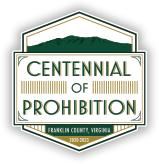The Era
Cultural Background
In popular culture, Ernest Hemingway and F. Scott Fitzgerald epitomized the restless youth of the “Lost Generation” during the Roaring Twenties. Their books chronicled how, in the aftershock of World War I, many abandoned the traditional lifestyles and morals of the previous generations. Sherwood Anderson’s stories revealed the sense of isolation and depression felt by many in American small towns. Following the war, many of these young people left the farms and small towns for the higher paying jobs and more exciting night life of the city. As vaudeville performer Sophie Tucker sang, “How ya gonna keep 'em down on the farm?: (After they've seen Paree')”.
But in Franklin County, many weren’t “lost,” they were poor. While some dressed in fancy clothes and danced the Charleston to jazz; others wore denim overalls and homespun clothes made from flour sacks. In response, the flour companies created fancy patterns so their customers could have variety. Local farmers plowed dirt scrabble farms behind mules, cut railroad ties, or labored in furniture factories. If they danced, and many didn’t, it was clogging to string bands, including Charlie Poole and the N.C. Ramblers who sang “If the river was whiskey,” but also, “Can I sleep in your barn tonight, mister.”
Others were entertained by a young Franklin County native Lewis “Rabbit” Muse who began playing a ukulele and singing a blend of blues, pop, and country while dancing in his own style, a mix of tap and flatfooting. “The dance don’t have no name,” said Muse. “I just get into all kinds of shapes.” Muse appealed to diverse audiences and covered songs ranging from the Ziegfeld Follies “My Blue Heaven” to Bessie Smith’s “Rocking Chair Blues.”
Ironically, during Prohibition, as legal saloons, which served an all-male and often segregated clientele closed, speakeasies and clubs which served alcohol illegally opened to women and other races. Especially in large cities, clubs hired jazz musicians, often black, to perform. Such notables as Duke Ellington, Louis Armstrong, and Josephine Baker appealed to white audiences as well as black, and before long, some clubs also had integrated customers as well.
In the Jim Crow South, segregated clubs remained the rule, but in rural areas, there were both white and black moonshiners, and the product was sold to all. Often, the buyer would leave money at a designated place such as a tree or the front of a country store, leave or enter the store, return a few minutes later to find a container of whiskey.
This practice was extolled by many a country musician in the song “Good Old Mountain Dew.”

